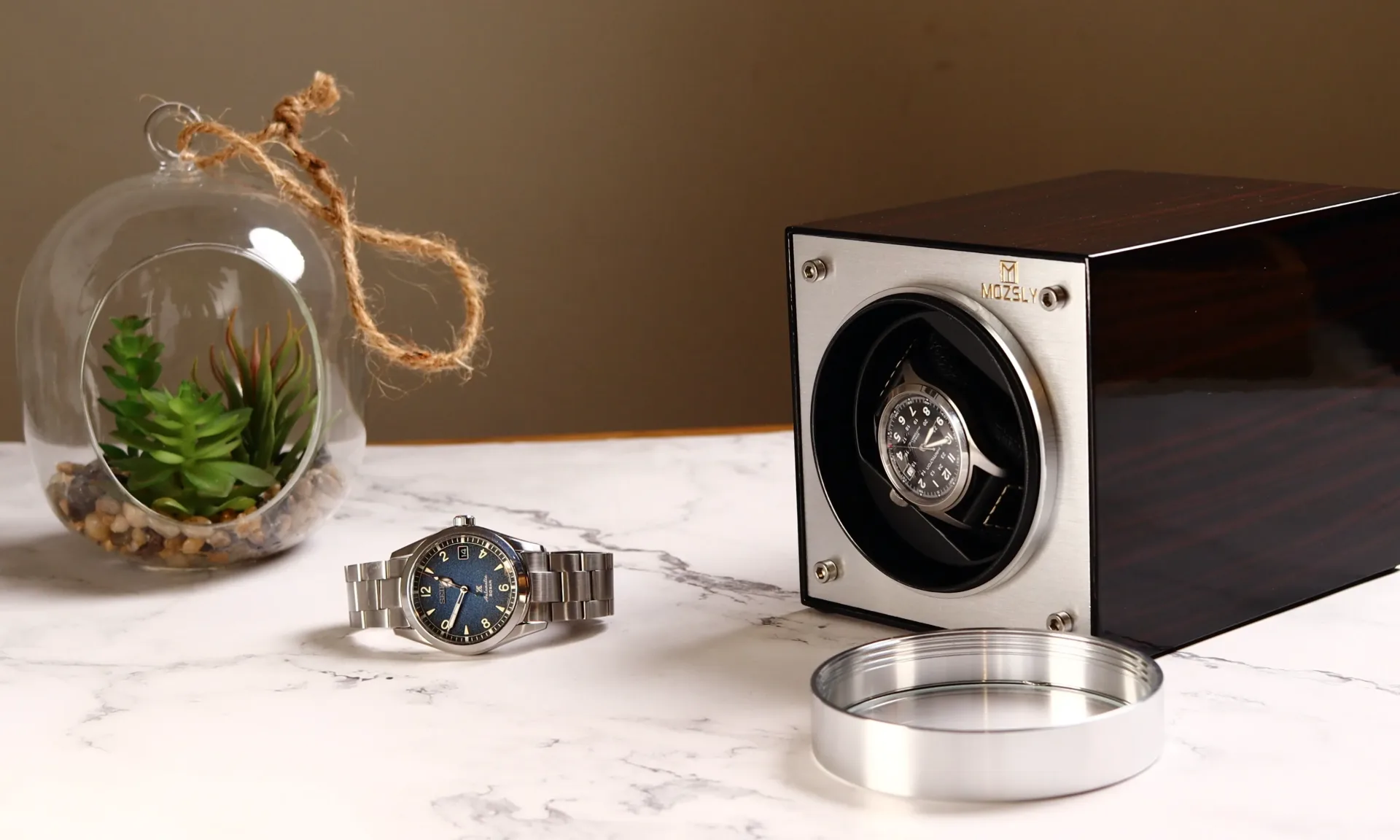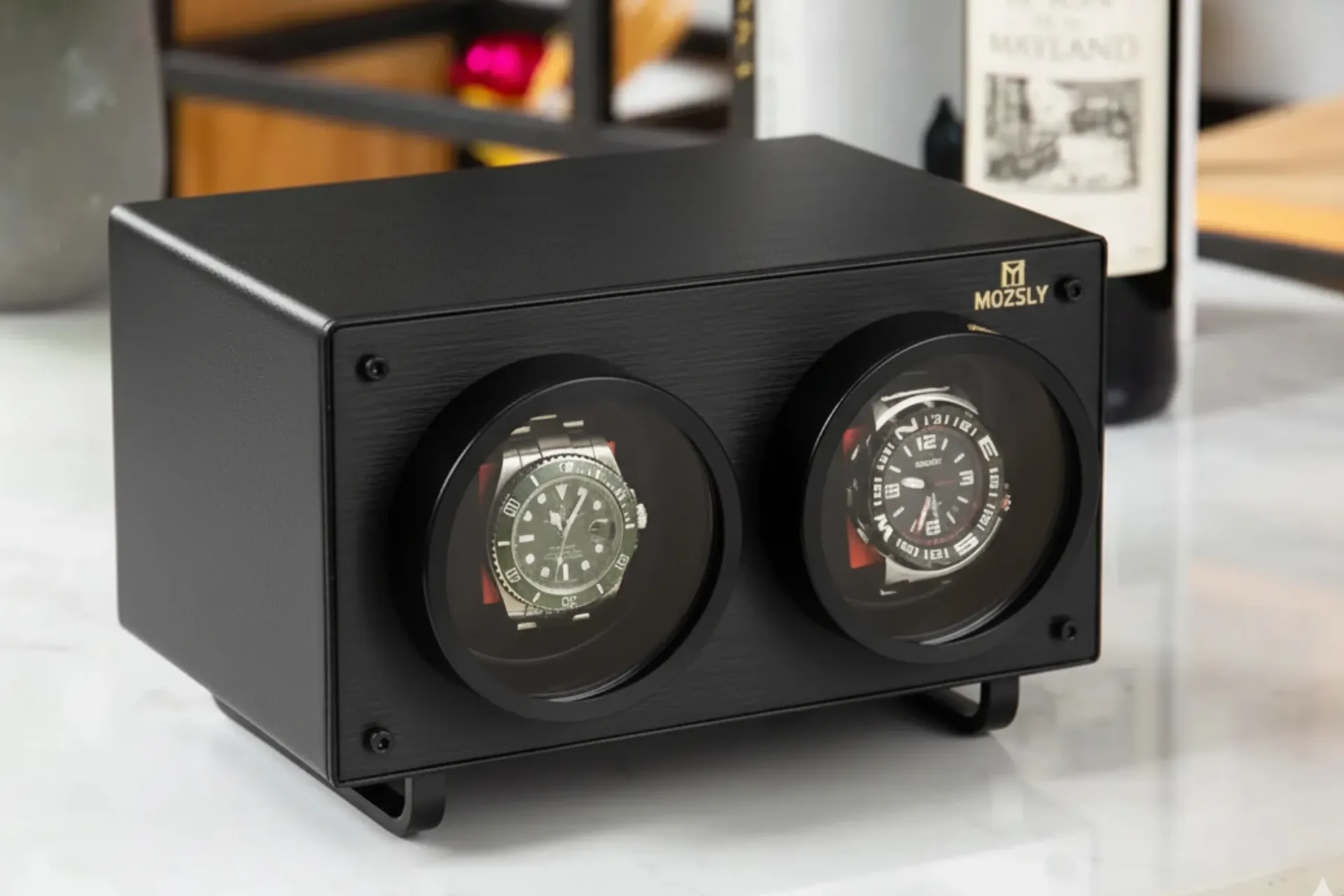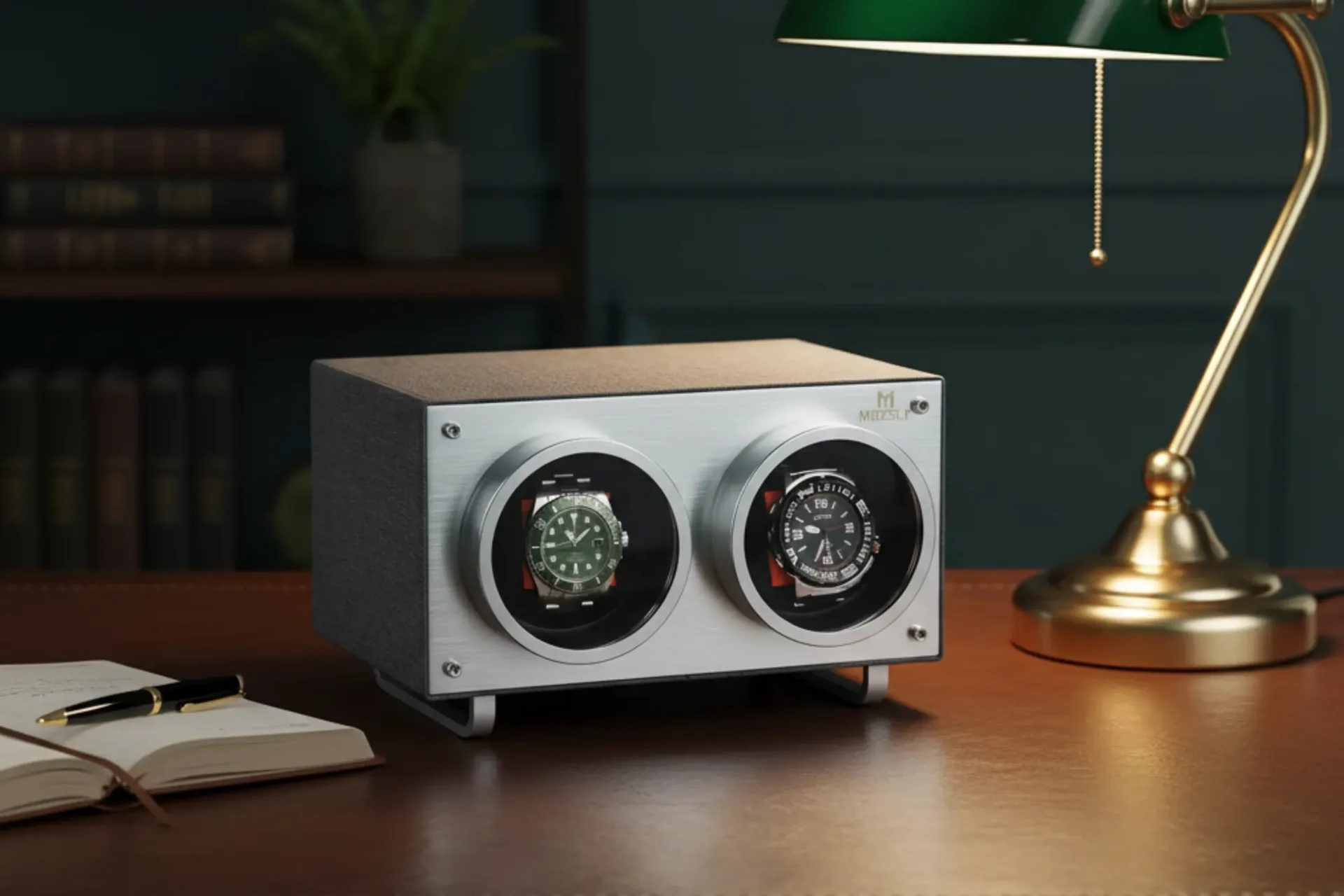Share This Post
Have you ever woken up, put on your favorite automatic watch, and found it completely dead?
Yeah, me too. I once missed an early train because I spent more than ten minutes frantically resetting the date, moon phase, and local time. The watch had been “out of place” for two months, a fact I didn’t realize until I was on a business trip.
That mishap taught me a simple lesson: how you store your automatic watch matters as much as how often you wear it. Improper storage can lead to oil accumulation, loss of accuracy, and aging of the movement.
If you’re searching Google for “best storage position for automatic watches,” I know you want a quick and reliable answer, not jargon. So grab a cup of coffee and read on—we’ll help you solve this headache once and for all.
Stationary Storage Basics
Let’s start with the free solution: store your watch wisely. Gravity exerts its influence on the movement even when the device is not on your wrist. Proper placement can slow wear and maintain accuracy.
(Tip: You can place a note inside the watch box to record your preferred placement. This will help you remember which test method worked best.)
Dial-Up Position
Lay the watch flat with the dial facing the ceiling—it’s that simple. Just like laying a frying pan flat to distribute the oil evenly.
This method is safe and reliable for overnight or short-term storage, but don’t let it sit too long. After a week or two, the lubricant can pool at the back, risking damage.
Crown-Down Position
Lay the watch on its side, with the crown facing the table. This position creates a slightly different pull on the balance wheel, which can cause a normally fast watch to slow down. This makes it suitable for automatic watches that tend to run faster, and this placement is less likely to damage the crown or stem. However, the downside is obvious: if your watch is already running slow, this method may make it run even slower.
Side Storage (Crown Up or Crown Left)
Collectors use this method during long breaks. Lying the watch on its side prevents lubricant from pooling, reducing oil buildup during storage. This suits heavy or vintage watches, but finding the optimal side may take trial and error.
Stationary Storage
Stationary storage is ideal if:
- You wear your watch almost every day.
- You own one or two automatic watches.
- You only wear them for a few days at a time.
- You don’t want to spend extra money right now.
Most of the time, this is my go-to: a trusty dive watch, the dial on my nightstand, and I’m done.
A Quick Note on Watch Winders
If you have three or four watches to rotate, or a moon phase watch you don’t want to reset, a watch winder is handy.
How a Watch Winder Works
A watch winder gently rotates your watch several times per hour, mimicking the movement of your wrist to keep the mainspring wound. No batteries or daily winding needed—just pick it up and go.
Revolutions Per Day (TPD) and Direction of Rotation
Every automatic watch movement requires a certain amount of movement to stay wound.
This number is called TPD (rotations per day), and simply put, it’s how many revolutions your watch winder should make in 24 hours.
Most movements require 650 to 950 daily rotations.
This roughly corresponds to the number of rotations your wrist normally makes each day.
Exceeding this number will not help and will only cause unnecessary wear.
The direction of rotation is also crucial:
Bidirectional Winding – Winds in both directions; best suited for most modern movements.
Clockwise – Required by some ETA and Sellita movements.
Counterclockwise—used by some Seiko automatic movements.
If you’re unsure, consult your watch’s brand, or opt for bidirectional winding at a frequency of approximately 750 TPD.
Making the Right Choice
Quick Head-to-Head
Quick Head-to-Head Comparison
Do You Need a Winder?
Pick up a winder if you:
- Rotate three or more watches.
- Own a perpetual calendar, moon-phase, or other tricky complication.
- Swap watches often for work or travel.
- Want every watch ready at a moment’s notice.
If you mostly wear one trusty daily beater? Stick with the free method.
Cost vs. Benefit
A reliable single-watch winder costs around 100–200. Premium models exceed 500.
A full Swiss automatic service runs 250–600 (Hodinkee Service Guide). If a winder prevents even one service over ten years, it nearly pays for itself—and you avoid the hassle of resetting.
Implementation & Best Practices
Setting Up Your Storage
Stationary
- Use a padded box or soft cloth.
- Keep it in a cool, dry drawer.
- Stay away from magnets—yes, your phone case counts!
Winder
- Place on a level, sturdy shelf.
- Use a surge-protected outlet or fresh batteries.
- I like the Mozsly Watch Winder—its motor is whisper-quiet, so my spouse no longer gives me the side-eye at 2 a.m.
Mind the Power Reserve
Most automatics store 40–70 hours of energy.
Example: A 48-hour watch worn Sunday night will tick till Tuesday night. Wear it again by then, and you don’t need a winder at all. Miss that window? Either wind it by hand or let a winder handle it.
Common Mistakes to Dodge
- Cranking TPD way too high “just to be safe.”
- Placing a winder on a shaky shelf—vibration kills accuracy.
- Forgetting a quick manual wind before long storage.
- Tossing different movements in a single-speed winder.
CONCLUSION & NEXT STEPS
You came here wondering, “How should I store my automatic watch so it doesn’t die on me?”
Now you know:
- One daily watch? Lay it dial-up, crown-down, or on its side—FREE and effective.
- A small fleet of timepieces or tricky complications? A quiet winder like Mozsly keeps everything ticking and ready.
Don’t let a sleepy watch make you late—or worse, rack up a pricey service bill. Pick a storage method tonight and test it for a week. Notice smoother starts? Great—share this guide with a watch-loving friend. Still wrestling with resets? Maybe it’s time to give a winder a spin.
Either way, treat your watch well and it will return the favor, second by perfect second.
Related Post's
Featured Video
Provide an email subscription feature for users to sign up for updates.
Follow the world of watches and cigars for exclusive content!
By subscribing to our newsletter, you will be the first to receive notifications of our latest articles, popular posts and special events.









